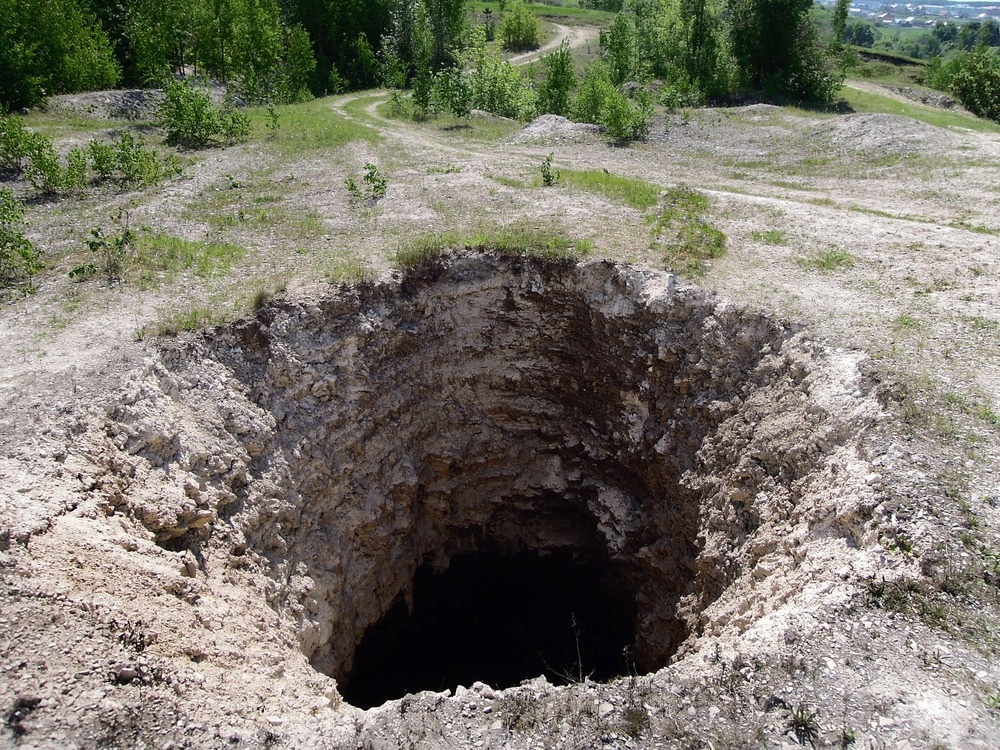This article focuses on the mining industry, the increase in mining activities in the past decade, as well as the phenomenon of sinkholes and how mining affects their formation. There will also be a focus on the latest research in mining prediction and prevention.

Image Credit: Poliorketes/Shutterstock.com
Mining Industry Overview
The inception of mining can be dated back to the ancient civilizations such as Indus Valley, where neutron activation analysis has discovered that Flint or Cher was extensively mined for coal using tools made from copper and bronze. Mining has come a long way due to the ever-changing nature of technology.
Until 1872, mining was mostly performed manually with miners having to perform the four mining stages:
- Exploration
- Discovery
- Development,
- Production and reclamation
In 1872, the General Mining Act of 1872 was introduced. This act developed a set of processes to mine materials from the earth and highlighted the need for developing sustainable technologies for mining operations.
Today, the technological advancement of mining can be attributed to four factors:
- Automation
- Global Positioning System (GPS)
- Workforce Tracking
- Digital Twins
Mining corporations such as BHP Billiton and Suncor in partnership with Caterpillar and Atlas Copco have developed autonomous mining vehicles with GPS capabilities that automatically conduct mining and material transportation. Extensive 3D digital twins of the mines are created that help the miners understand the specific locations that are deemed safe for mining.
Sinkholes in Mining
Sinkholes can be best described as a sudden depression in the ground area primarily occurring due to the dissolution of rocks under the land surface.
Soluble rocks such as gypsum and limestone frequently dissolve into groundwater or rainwater and are a primary cause of sinkholes. Sinkholes usually lead to the creation of underground spaces and caverns.
There has been an increase in sinkholes since 2014. According to a report by the Met Office in the UK, the rise in sinkholes can be attributed to the exceptional periods of rainfall occurring during the winter months in England and Wales.
These sinkholes, besides being deadly to people, also disrupt the water and electricity supplies in the area. They also cause structural damage to buildings, roads and bridges.
Sinkholes also cause a ‘domino effect’, where the ground surface stability of the surrounding areas also decreases.
The Relationship Between Mining and Sinkholes
Despite heavy rains being the primary cause of sinkholes, mining is a major factor. Because minerals such as coal and limestone are extensively mined from the earth’s surface, this has led to the dewatering of the area, causing a subsequent collapse of the ground surface. For example, Norwich in the UK has been affected by sinkholes in the past several years due to extensive chalk mining activities.
Sinkhole Prediction and Prevention
Due to the increase in sinkholes, predicting them has become a priority task.
A research implementation published in Solution Mining Research Institute uses the concept of inverse velocity to predict the sinkholes caused due to solution mining.
The inverse velocity method basically calculates the rate of deformation of the materials and then plots the inverse of the rate of deformation against the time passed. This method is implemented by measuring the ground deformation across three mining sites, namely, Brinefield subsidence, Ontario, Grosse Ile, Michigan, and Cerville-Buissoncourt, France.
The application of the method provides a short-term and long-term analysis of whether a particular mining location is prone to sinkholes based on the current mining practices.
Although the method has a set of assumptions regarding location temperature and stress on the land surface, it still acts as an Optimistic Awareness model for mining companies so that quick action can be undertaken.
As far as sinkhole prevention is concerned, various researchers have been developing a set of policies and guidelines for mining industries to adhere to whenever a new site is chosen for mining.
Researchers at the Institute of Hydrogeology and Engineering Geology in collaboration with the Central Coal Mining Research Institute, Xian in China have attributed factors such as soil weight, buoyancy, suffusion process, and vacuum suction to the sinkhole formation in China.
The key measures that have been suggested by the research include controlling the amount of mine drainage, maintaining the water level and the gas pressure in the mines, and sealing sub-surface cavities in the land surface soil.
As sinkhole occurrence would become a common occurrence in the future, many countries have taken note and allotted extensive budgets to predict and prevent them in the future. With NASA using its Interferometric Synthetic Aperture Radar (InSAR) for spotting minor changes in sinkhole areas, the future for sinkhole prediction looks quite promising.
Real-Time Solutions for Evaluating and Monitoring Geohazards in Mining Operations
References and Further Reading
Earth Systems (2018). A Brief History of Mining. [online] Earth Systems. Available at: https://www.earthsystems.com/history-mining/
Sinkholes in karst mining areas in China and some methods of prevention. (1999). Engineering Geology, [online] 52(1-2), pp.45–50. https://doi.org/10.1016/S0013-7952(98)00053-2
Taurino, Veronica & Farina, Paolo & Pereira, Jose. (2020). Prediction of sinkholes induced by solution mining through the inverse velocity method. https://www.researchgate.net/publication/348357441_Prediction_of_sinkholes_induced_by_solution_mining_through_the_inverse_velocity_method
Cossins, D. (n.d.). Sinkholes: Can we forecast a catastrophic collapse? [online] www.bbc.com. Available at: https://www.bbc.com/future/article/20150226-when-the-earth-swallows-people.
Venter, J, Kuzmanovic, A & Wessels, SDN 2013, An evaluation of the CUSUM and inverse velocity methods of failure prediction based on two open pit instabilities in the Pilbara, in PM Dight (ed.), Slope Stability 2013: Proceedings of the 2013 International Symposium on Slope Stability in Open Pit Mining and Civil Engineering, Australian Centre for Geomechanics, Perth, pp. 1061-1076, https://doi.org/10.36487/ACG_rep/1308_74_Venter
British Geological Survey. (n.d.). Understanding sinkholes and karst. [online] Available at: https://www.bgs.ac.uk/discovering-geology/earth-hazards/sinkholes/.
Disclaimer: The views expressed here are those of the author expressed in their private capacity and do not necessarily represent the views of AZoM.com Limited T/A AZoNetwork the owner and operator of this website. This disclaimer forms part of the Terms and conditions of use of this website.